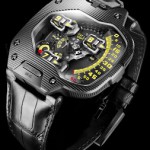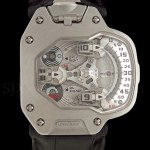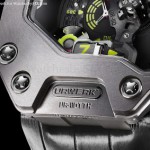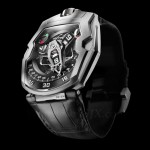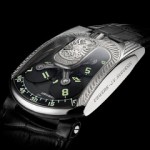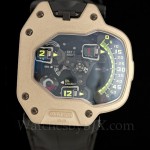Urwerk’s UR-10 Spacemeter is Sci-Fi and Almost Conventional
More wearable and employing hands.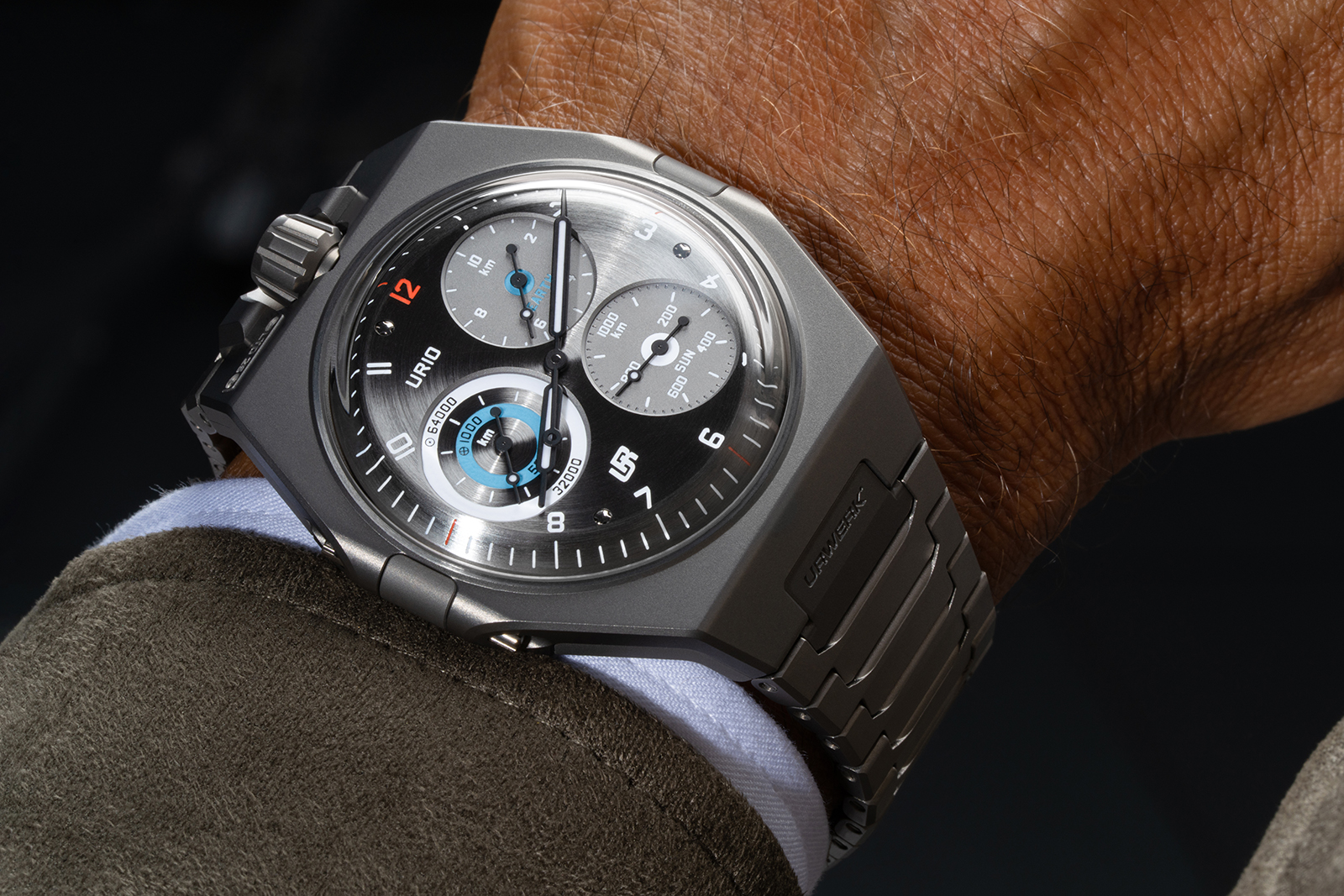
Known for its avant-garde approach to watchmaking, Urwerk takes a surprise detour into orthodoxy with the UR-10 Spacemeter. At least at first glance, it is a round(-ish) sports watch with an integrated bracelet – and normal hour and minutes hands – as well as indicators you’ll find on no other watch.
But conceptually, the UR-10 Spacemeter is typical Urwerk. The indicators on the dial are all astronomy related, bringing to mind past Urwerk models and the brand’s sci-fi style.
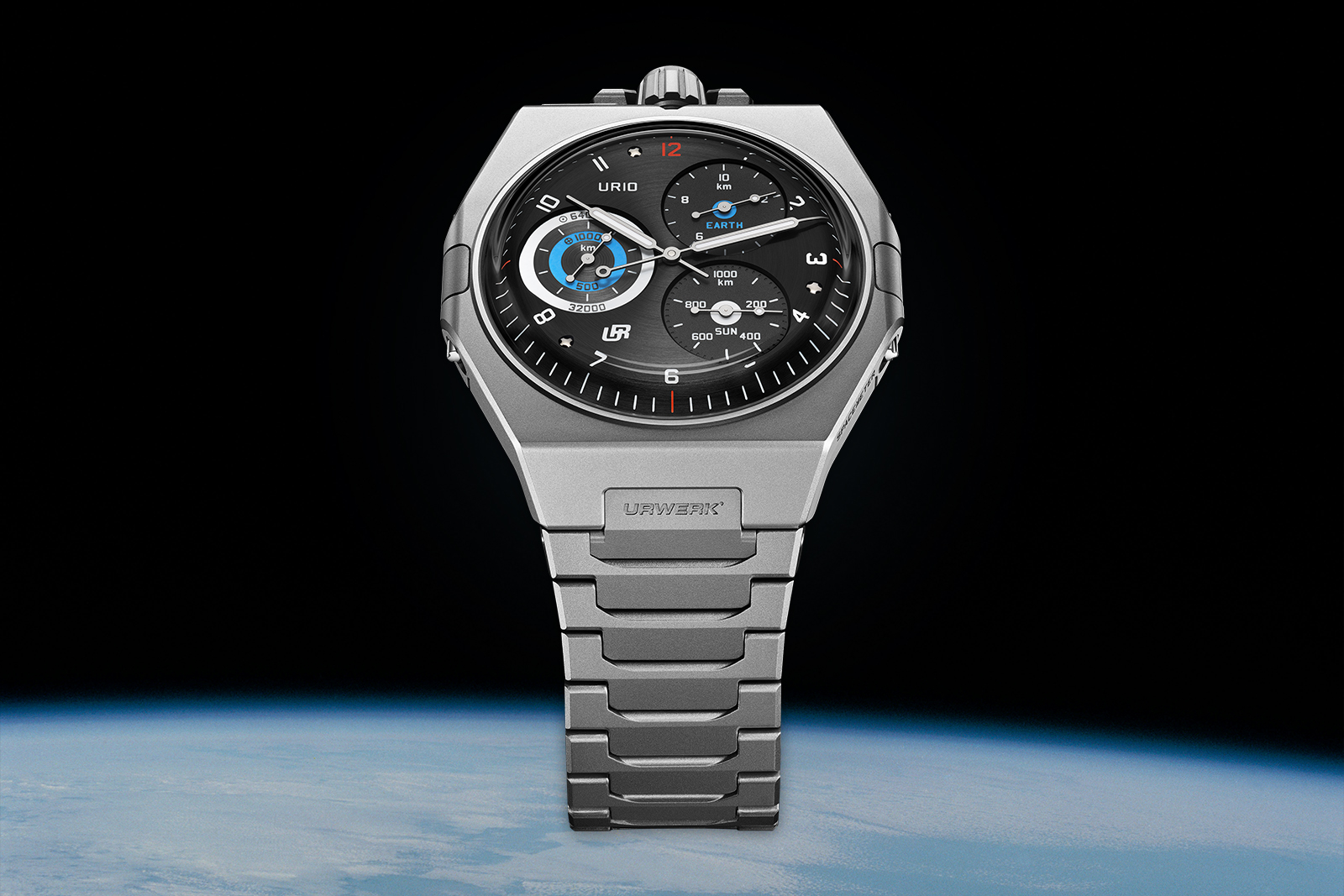
Initial Thoughts
Oddly, I find I find myself more impressed with the UR-10 aesthetically than technically. Urwerk has cultivated a military, sci-fi aesthetic that I’ve become enamoured with, especially the EMC. And, if the UR-10 is anything like its similarly sized and braceleted peers, it will wear well too. Then there are the dials, with ideal typography, which sit under a sapphire bubble and remind me of a flush-mounted ship’s compass.
The complications are inspired by an unusual 19th-century regulator clock by Gustave Sandoz, and attempt to track both the Earth’s rotation and revolution. An interesting idea, but the execution is disappointing as the indications aren’t particularly mathematically accurate and based on arbitrary distances, like 10 km, rather than natural phenomenon like, say, a sidereal time watch, where one rotation of a sidereal hour hand corresponds to one rotation of the Earth.
However, Urwerk likes to develop ideas over time, and the Spacemeter concept has potential, so I anticipate more astronomical watches from the brand. Its pricing is steep at CHF70,000, but somewhat justified by the quality and Urwerk’s small scale of production.
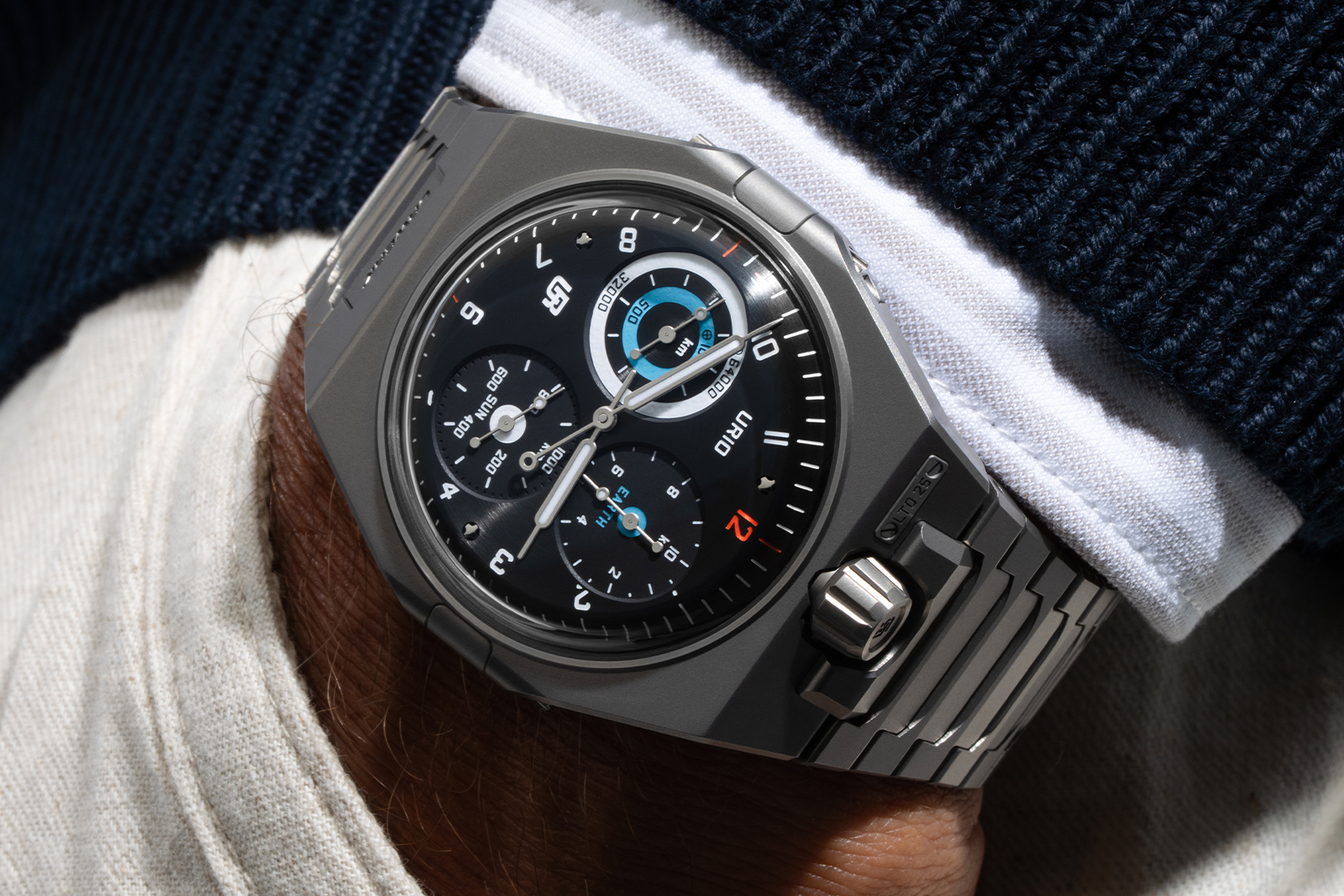
Case and Bracelet
Before getting to the dial and movement, the Spacemeter is Urwerk’s slimmest watch yet, with a case that is only 7.13 mm tall – without the sapphire crystals. When counting the crystals, it is probably around 12 mm thick. As a result, the UR-10 is probably the Urwerk model that wears most like a conventional watch, making it more ergonomic than many of Urwerk’s most exotic case designs.
The case is two parts, a titanium upper and stainless steel lower, held together by screws through each of the winglets, essentially the same technique used on Patek Philippe’s Nautilus or Cubitus. Like many Urwerks, the UR-10’s crown is at 12 o’clock, and the northern end-link doubles as a crown guard.
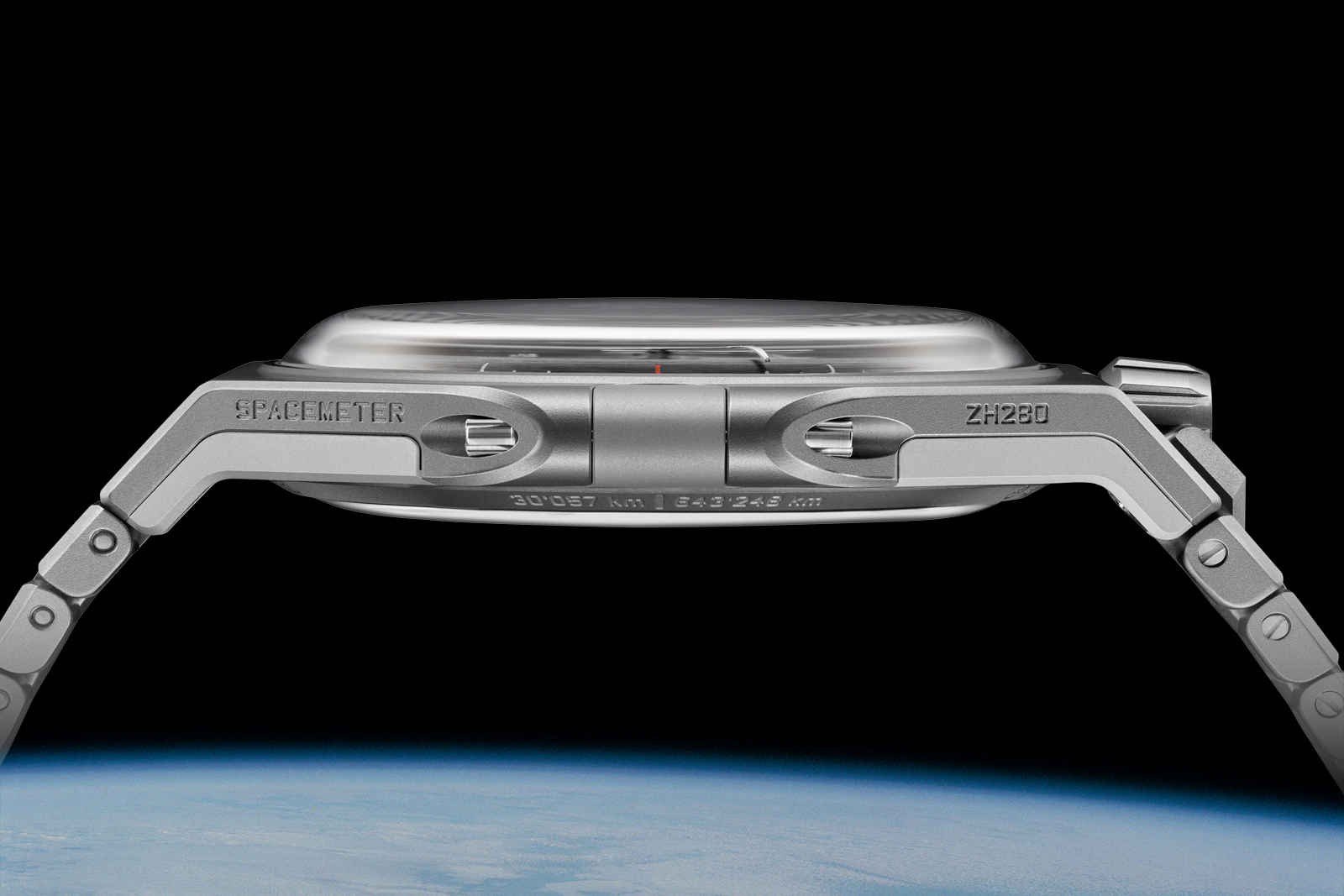
The integrated bracelet is in sandblasted titanium to match the case. Design wise, it differs little from other Urwerk bracelets and suits the case perfectly. The only shortcoming is the lack of on-the-fly adjustment.
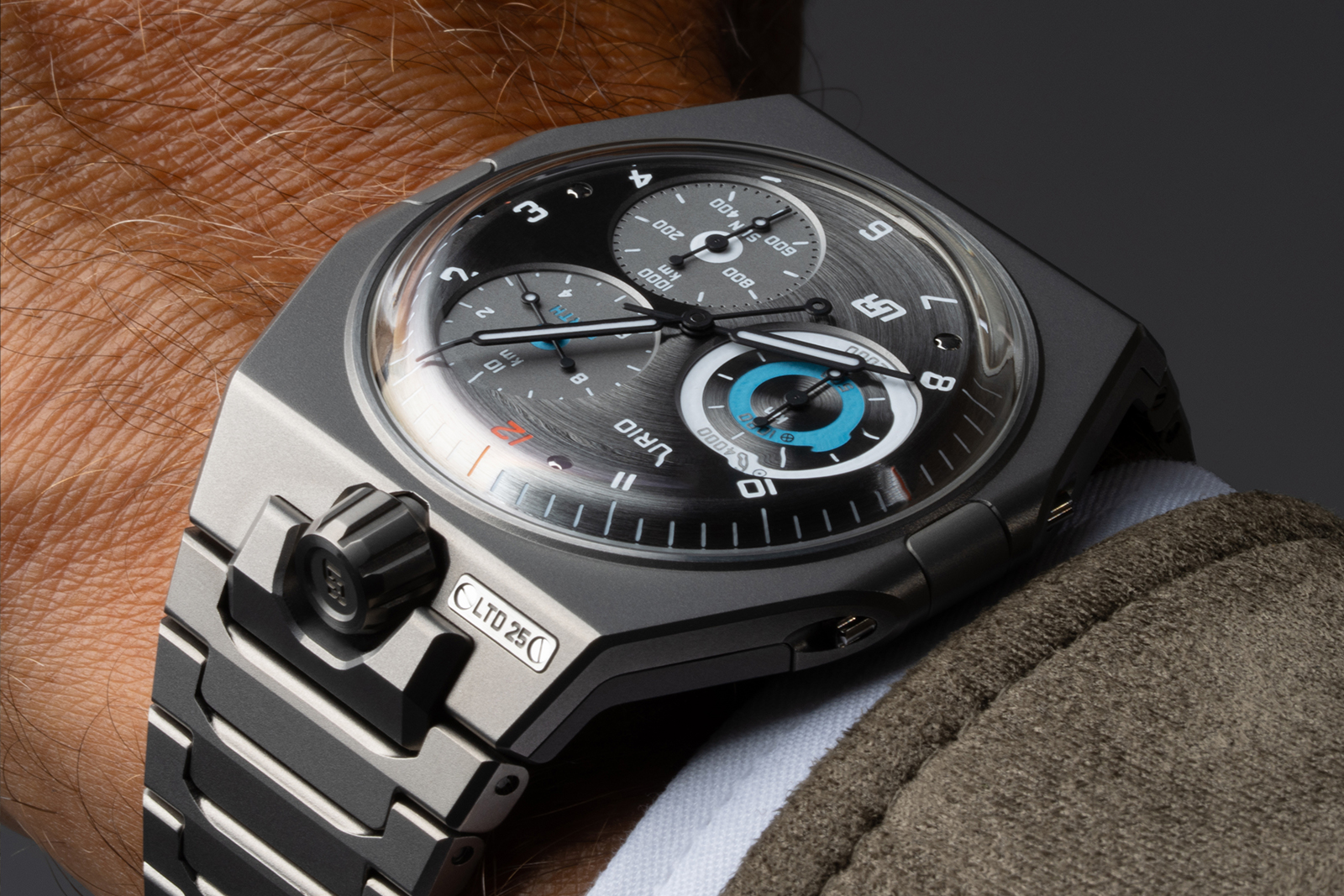
Dial
Urwerk offers the Spacemeter with a choice of black or grey PVD dials, both with the same red and azure accents. Notably, it’s the first all-mechanical Urwerk with conventional hands.
The “Earth” dial at two o’clock completes one rotation for every 10 kilometres of the Earth’s daily rotation, as measured from the equator, which Urwerk approximates as 22 seconds, though the true value would be about 21.56 seconds.
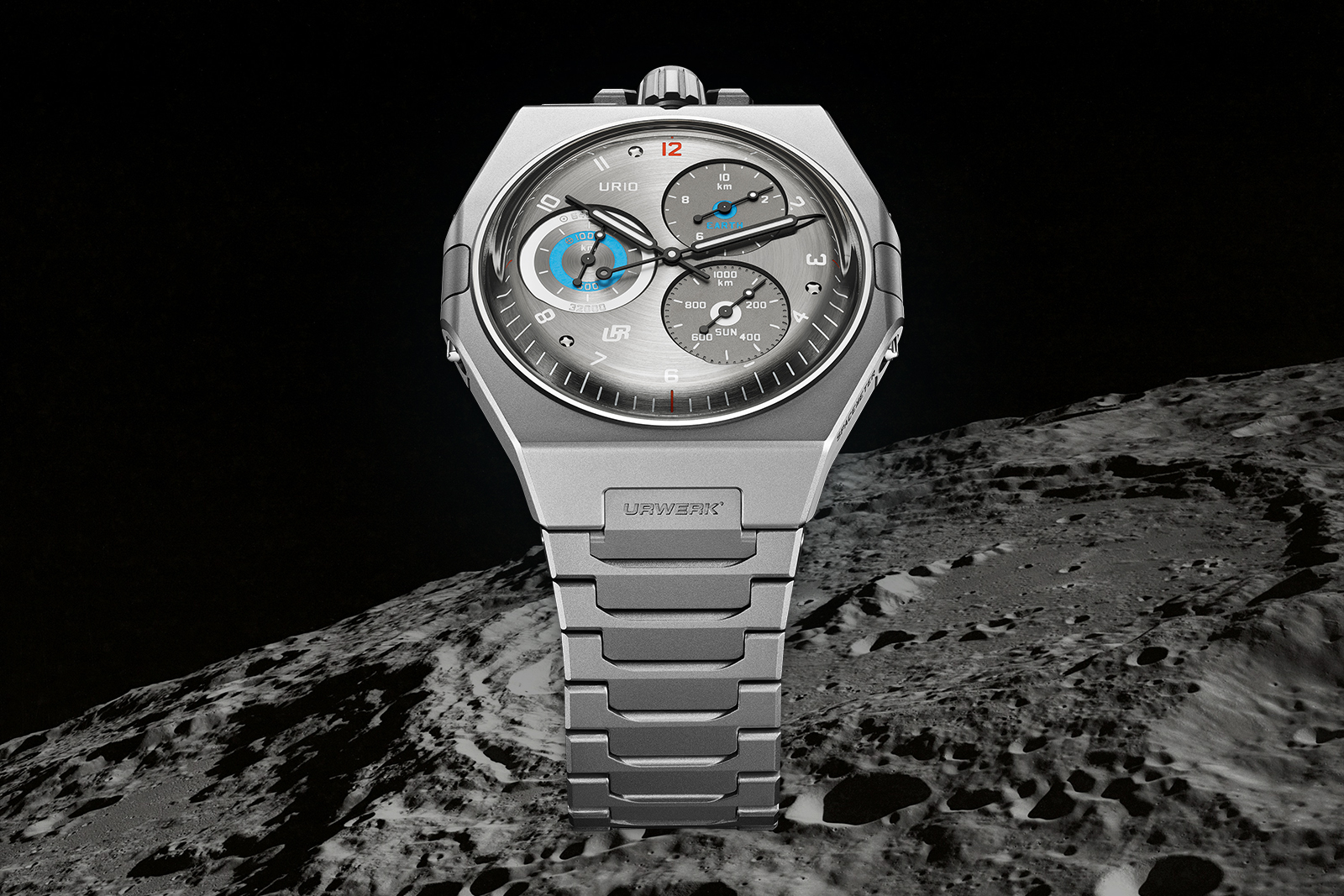
A similar dial at four o’clock – marked “sun” – completes one rotation every 34 seconds to approximate every 1,000 km the Earth travels in its orbit around the sun.
It is worth pointing out that the Earth’s orbital velocity changes significantly over the year, speeding up as it gets closer to the sun, and slowing as it moves away, which adds further inaccuracy to the indicator.
A third and final sub dial at nine o’clock rotates once for every 1,000 km of the Earth’s rotation or 64,000 km of the Earth’s orbit around the sun – both distances take roughly 35 minutes and 50 seconds to complete, rounded up to 36 minutes on the watch.
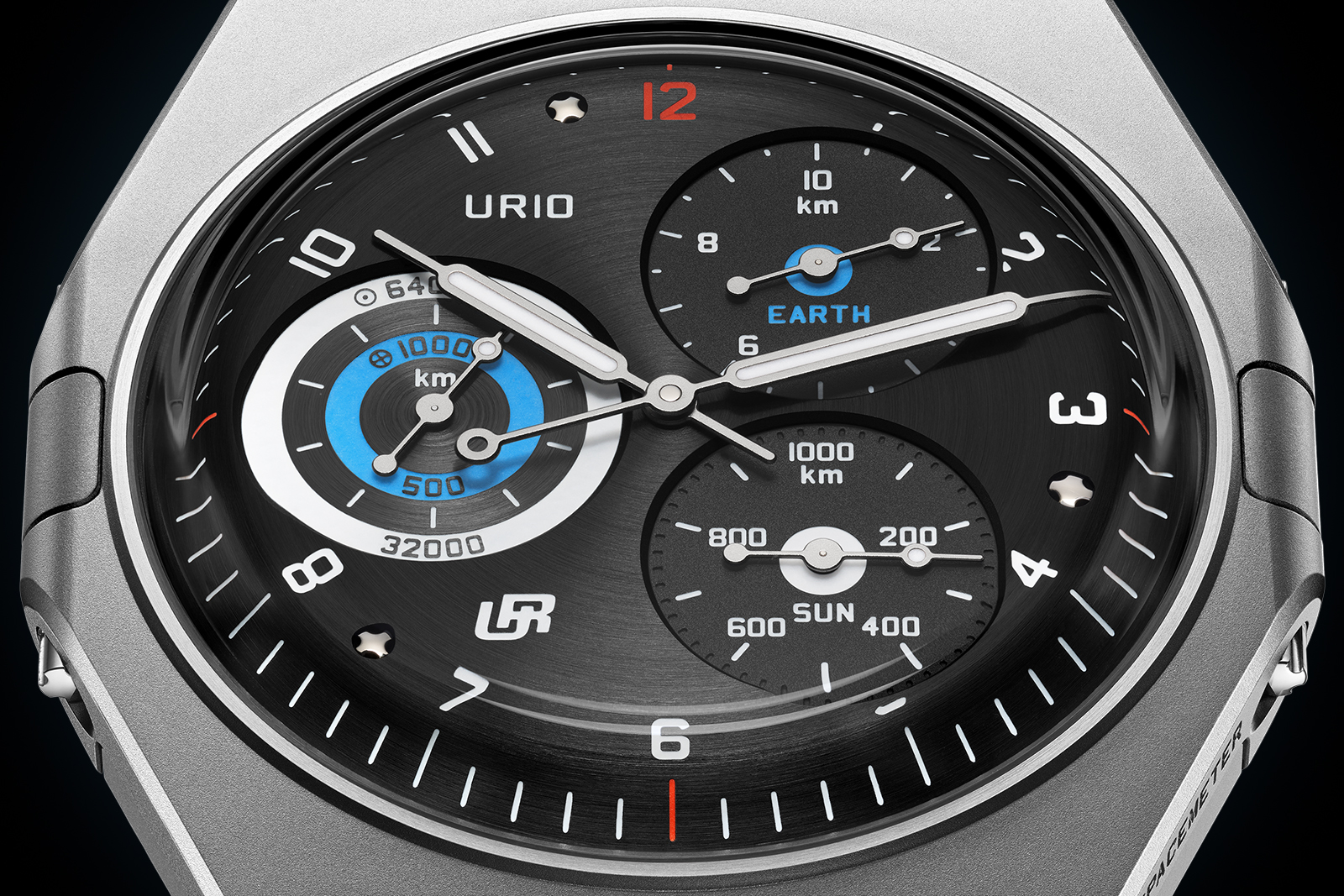
Movement
Turning the watch over, a peripheral hand that turns once every 24-hours to track the rotation of the Earth. Of course, the Earth actually takes one sidereal day (which is 23 hours, 56 minutes, and 4 seconds of normal time) to rotate. The markings on the case back correspond the Earth’s rotation – read clockwise – and the Earth’s revolution about the sun – read counterclockwise.
The automatic Vaucher base calibre only winds in one direction, normally free spinning in the other. Urwerk uses a patented air resistance based breaking system it calls a “Double Flow Turbine” to slow down the rotor when it travels in the non-winding direction, reducing noise and wear – which is useful, but more importantly, cool.
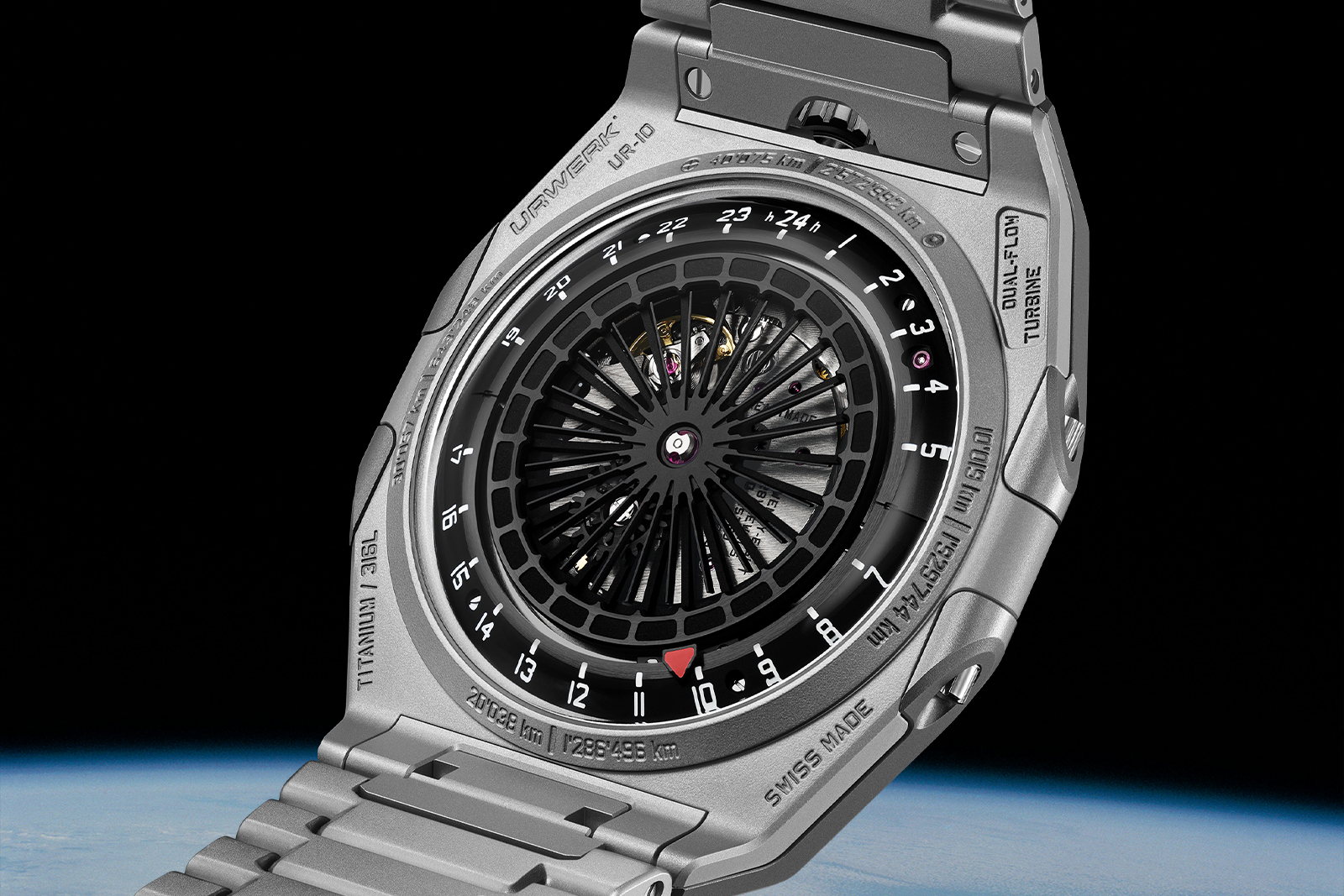
Key Facts and Price
Urwerk UR-10 Spacemeter
Diameter: 45.4 mm
Height: 7.12 mm (without crystals)
Material: Titanium with steel case back
Crystal: Sapphire
Water resistance: 30 m
Movement: UR-10,01
Functions: Hours, minutes.
Winding: Automatic
Frequency: 28,800 beats per hour (4 Hz)
Power reserve: 43 hours
Strap: Titanium bracelet
Limited edition: 25 pieces per each dial colour, 50 total
Availability: At Urwerk retailers
Price: CHF70,000 excluding taxes
For more, visit Urwerk.com.
Back to top.

